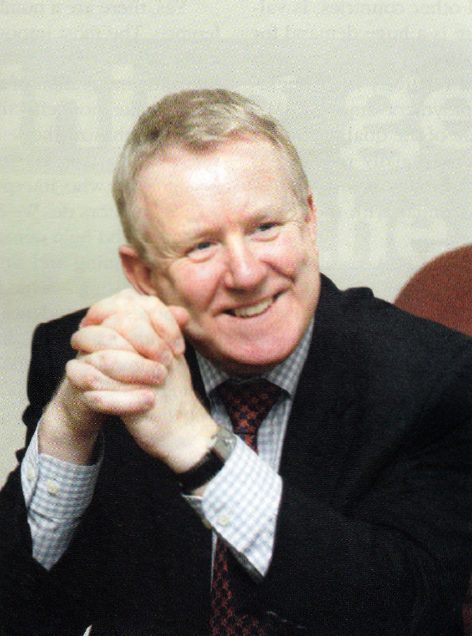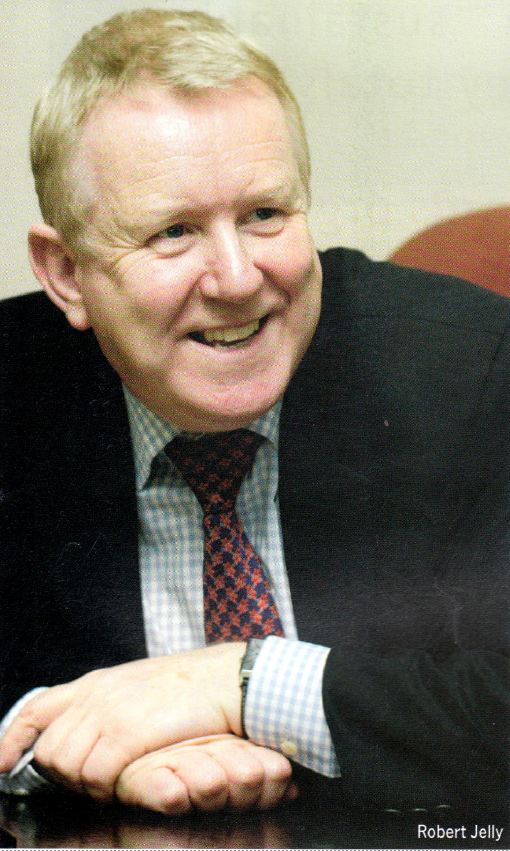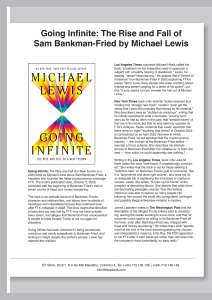Robert Jelly is the Director of Education at the Chartered Institute of Management Accountants (CIMA), and is based in its London Headquarters. A member of the institute’s senior management team, he is responsible for all education, training and Continuing Professional Development that CIMA conducts in all of its markets throughout the world. His main task is to ensure that CIMA remains the premier international qualification of choice for employers seeking management accountants.
Jelly studied Accounting and Economics at the University of Strathclyde, Glasgow and prior to joining CIMA, he was Head of Dundee Business School in Scotland. His consultancy activity while at Dundee, included work for the Central Bank of Mauritius, and a United Nations sponsored project in Lesotho.
In this interview with Business Today during a recent visit to Sri Lanka, Jelly spoke about the edge afforded by CIMA as a qualification, the changes to the management accounting syllabus introduced this year, and how CIMA has taken into consideration the future needs of employers, among other topical issues.
By Ayesha Zuhair

Could you give us a brief description of your background, and what your current visit to Sri Lanka entails?
I’m an accountant by profession, and I have been with CIMA for five years. As the Director of Education, I am responsible for all education, training and Continuing Professional Development (CPD) that CIMA conducts in all of its markets throughout the world. I belong to CIMA’s senior management team, which consists of five members who manage CIMA globally. Prior to joining CIMA, I was Head of Dundee Business School in Scotland, where my teaching focused on management accounting and financial management. with research in the area of accounting for brands. This is my fourth visit to Sri Lanka because it is an important market for us. In fact we’ve reached a historical landmark here in Sri Lanka because we passed the 10,000-studcnt mark. This makes it our second largest market, after the UK, in student terms, and we are especially delighted about that. I’m in Sri Lanka at the invitation of the CIMA-Sri Lanka Division, and I don’t like to stay away so I come here at least once a year! A group of us visited Jaffna, and that was exciting because I don’t think anyone from CIMA-London has ever been there, certainly not in the last 20 years. CIMA classes have recommenced in Jaffna College, and that is a positive development because Upali Ratnayake, the Executive Director of the CIMA-Sri Lanka Division, and the Council have been keen to provide our course to students in all parts of the island. We also paid a visit to the University of Jaffna and met students and staff there.
You mentioned that the 10,000-student mark has been passed in Sri Lanka. To what factors would you attribute this immense popularity?
The qualification here as in all other countries, is valued greatly by employers, and there is a huge demand for those who hold the CIMA qualification. It is interesting to note that although Sri Lanka has a relatively high unemployment rate, there is no unemployment among CIMA members. This proves that the value of the qualification is enormous. Moreover, CIMA is internationally recognized and this enables members to work in almost any part of the world because employers are familiar with the qualification. Employers appreciate the fact that CIMA regularly refreshes its course content, and is up-to-date with changing trends in management accounting. We do that by carrying out major research worldwide into what employers need. We believe that the most important stakeholders are the employers, and we pay close attention to their requirements. Without the employers, our students cannot secure jobs, and jobs are important not just for an individual in a country, but also for the entire economy. Earlier this year, one of my colleagues from CIMA-London was here to launch the new syllabus, to which many changes have been incorporated. For example, we have introduced examinations in risk and control strategy because as companies operate in an increasingly global environment, the risks are greater. We’ve seen the risks of currency fluctuations, the risk of Talorism in many parts of the world, changing demand as a result of taste changes, and other forms of business risk. Hence we decided to introduce a paper dedicated to that subject. The CIMA syllabus is revised every five years, but we update it annually through small changes. Our approach to financial management has changed. Research carried out by us has shown that employers no longer want our students and members to be too focused on preparing accounting information but rather on interpretation, because much of the preparation can now be done by software programs. Where we’re adding value to the business is that once the software has produced all the numbers, CIMA members can interpret them.
A lot of time in the course is also spent in imparting the skills to communicate the information to the rest of the people in the organization including the marketers. senior management, and engineers. When I asked one of our major employers in the UK. Lehman Brothers. an investment bank, why they chose CIMA as their preferred employer, they said that CIMA members can paint pictures with the numbers. That sums up that we can actually communicate with non-financial people, who don’t understand the numbers. We use comprehensible language, we work in the business, and consequentially, everyone in the organization can relate to CIMA members. Furthermore, from this year onwards, we will apply international accounting standards, and that is important for accountants because they need to understand not just their own local standards, but international ones as well.
In addition to being sought-after by employers, what other factors give the CIMA holder an edge, and what is the type of role that he/she can play in this information age, where rapid change is the global norm?
Yes, there are a number of other factors that make a difference. The most important among them in terms of what differentiates CIMA is the M in our qualification, which signifies the integration of accounting with management in order to make more effective decisions. We recently re-branded to emphasize the letter M because we want to convey the message that we are not just producing conventional accountants who interpret numbers and look back at the past as auditors do. We focus on what can add value to the business, and help our students look forward.
The training and skills in our qualification include future forecasting – what is going to happen tomorrow. The M exposes our students to functions other than accounting to include marketing, human capital management and IT as well. Importantly, the final part of the course focuses on strategy, and it consists of business strategy, risk and control, and financial strategy. Additionally, in the last two years, we have made all assessments computer-based. Students prefer this because of the flexibility that it affords. They don’t have to wait for exams in May and November: they can do it almost whenever they want to. Another unique feature of CIMA is that we’re the only international accounting body that operates a case study worldwide. Through this case study, we try to simulate the real world as much a possible. Students are given all the material so they can prepare by talking to their employers, seeking advice, and searching the internet. -They won’t know what will be required of them until the day of the exam, but employers tell us that they appreciate this mode of preparation and study. We have also changed our entry requirements, because we want the best students to come to us since employers want the best. There has been confusion in many countries over the standard of the A/Level examination, and as a result we’ve made it compulsory for all those who want to follow our professional courses, to sit for the certificate in business accounting. This provides five basic introductions to the world of business which lays the foundation for our professional examinations.
With the emphasis on the M in CIMA. would you say that CIMA as a qualification does not focus solely on accounting as most of us tend to think, and that it is a more broad-based qualification, perhaps relevant and useful to a wider range of professionals?
Absolutely. In fact many of our students are from universities. We see an increasing number of engineers and IT specialists opting to follow the course, because they’ve felt the need to have a strong financial management background as it extends them better prospects in the job market. It is difficult to progress within an organization without a proper understanding of financial management, especially if one aspires to join the Board of Directors. Irrespective of whether a person is an engineer, marketer or HR specialist, he/she needs to understand the numbers and how the business is driven.
Equally, it is most relevant to those from the not-for profit sector and Non-Governmental Organizations (NGOs), and in our total student membership, we have seen an increasing number of people coming from this sector. As a matter of fact, it now represents 12% of our total member hip. If one consider the billions of pounds spent on aid. mo t of it is utilized for projects, and quite uniquely our exam focus a great deal on project management. Therefore. once they qualify, they have high-level skills in managing projects.
Could you please elaborate on how the Computer-Based Assessment (CBA) works, and whether CIMA has the IT support that is required for this?
The CSA was introduced three years ago, but until last year we allowed students to sit for both paper-based and computer-based exams. However since early this year, all our students use the CBA. It has been a great success, particularly here in Sri Lanka, and some of the local colleges have hundreds of students sitting for these examinations every month. With regard to the question of IT support, yes, we do have the required equipment. We work in partnership with a software company, and the actual computer equipment does not have to be very high-tech. It is simple in one sense, but sophisticated in the other because the student receives immediate feedback. So if they’ve passed, they know that straight away, and equally, if they don’t succeed, they can study further and focus on their areas of weakness.
What goes into developing a new management accounting syllabus, and how is the learning process made meaningful?
It connects mainly to a point I made earlier, which is that we ask employers what they want specifically when we design the syllabus, using experts. This time the Business School of the University of Bath carried out research for us, in finding out what employers everywhere require, and they sent out 12,000 questionnaires on our behalf. Secondly, the exams do not focus merely on theory and principles: they are about ‘know-how’, rather than just ‘know’ as I mentioned with the case study, which simulates the real world.
Thirdly, it is about creating the right environment for meaningful learning, where we work closely with our colleges to enhance what we call the student experience. We have a quality partnership arrangement whereby when a particular institute offering CIMA attains a particular set of quality standards, they are awarded the CIMA Quality Partner status. This includes IT facilities, a well-equipped library, and high-quality lecturers. We now have four colleges in Sri Lanka that have achieved this high standard. Outside the UK, we have only 12 institutes with the CIMA Quality Partner status including the four here. The four colleges here are the Academy of Business Studies (ABS), Wisdom Business Academy, Mercury Institute of Management and Imperial College of Business Studies. This time last year we awarded our first CIMA Quality Partner status to ABS, followed quickly by Wisdom. CIMA has been working with the colleges to help improve the overall student experience, and ensuring the creation and maintenance of a proper learning environment with ample lighting, air-conditioning, sufficient space, etc. We are also increasing advice access through the CIMA website. That’s one way of reaching students everywhere in the world, and we have a lot of support material on our website. Since Sri Lanka is such a large market, we have a Division here with an executive team providing support as well.
How do you view continuous professional training? Do you feel that it is sufficient if it remains a voluntary option, or do you have any plans of making it compulsory?
CIMA has decided to make it compulsory for all its members from January this year. We had informed our members of this change in policy prior to it taking effect. When we say it applies to them all, it means that we have made it compulsory for them to undertake a six-point process of reflecting on their development. If they’ve undergone that process, then they comply with our policy. For example, if some of our members are retired and they’re just gardening or playing golf, they will go through these six steps and decide they do not require anything. But if they wish to remain a member, they will have to go through this. In many of the new products that we are developing for our members, our key purpose is to increase the employability of our members and students. This is what drives all of us in CIMA. We’ve reached the stage in many markets where we’re now the chartered qualification choice for employers, and this means that when employers are looking for management accountants, their first preference will be to recruit CIMA members. It is therefore about making our members and students employable and to maintain this position is our aspiration.
What level of importance does CIMA render to moral and ethical practices of its professionals, in light of several highly publicized corporate financial scandals such as the Enron and WorldCom debacles?
It is absolutely vital to emphasize on high ethical standards in a professional course. If one consider what differentiates a professional body from a non-professional body then ethics and a moral code of conduce are right at the heart of that differentiation. If a person holds a degree rom a university, the university cannot take char degree away from him/her. However, a professional body can cake the qualification away if a member does not adhere to proper ethical standards in the concerned member’s professional life.
One of the three pillars in the qualification is our approach to ethics, which is not about principles and theories of ethics, but rather about how ethics are applied to business decision-making. In addition to that, from next year onwards, 10% of the final assessment will be in the form of a case study, which will require students to address an ethical issue. This means that they cannot avoid ethics if they aspire to succeed.
CIMA also signed a unique and exclusive deal with Harvard Business School publishing this year, where we are working with them with regard to online products. Currently, we are jointly working on a new online ethical decision-making module, which will be available to our students and members. We may decide to make this module compulsory for our members to undertake every three years. So ethics will be an aspect they will have to keep up with. Moreover, in response to Enron and WorldCom. CIMA has worked with the International Federation of Accountants (IFAC) to research this area. Particularly after these two financial scandals, there has been a great deal of emphasis on corporate governance. One of the problem with this considerable attention to governing a business is that management time becomes out balanced whereby management may get diverted from achieving the business’ ultimate goal of profit making. So we developed a new model, which we termed Enterprise Governance, and it is about being vigilant about business performance, while paying due attention to ethics and transparency. After all, a firm could have the best corporate governance in the world, and it could still lose business.
Furthermore. we are changing our royal charter and by law to build in more rigorous ethical requirements for our members. The bottom line is that ethics are absolutely vital to CIMA and we see it as being inseparable from our members.
From both a personal point of view and from CIMA’s point of view, could you comment on the significance of concepts such as intellectual property. HR management and branding to
Let me first give my personal observations in this connection. As I mentioned at the beginning prior to joining CIMA. I was Head of Dundee Business School, and so I was an academic for almost 20 years. My personal interest is on how to draw the attention of shareholders to the value of intangible assets such as people and brands through financial reports. My research work too focused on accounting for brands. Therefore, from a personal point of view I believe that matters such as the intellectual property of people within an organization as well as the value of corporate brand is of increasing interest and relevance· throughout he world.
From CIMA’s point of view, we have incorporated these subjects into our syllabus. Very often companies struggle to value their most important asset and there’s no easy answer to that. But certainly if a company wants to design model to value those to do that for the given company. The approach used by companies in the past enabled them to include its intangible assets in the balance sheet to pay the cost over a number of years, but now international accounting standards have changed, and companies are required to charge it all to the income statement. So it has slightly changed the behavior, but in the final analysis, it is vital for firms to recognize the importance of brands and their people. If they don’t, they will lose them, and this is built into CIMA’s syllabus and assessments.
Do you think that brands can be given a tangible value? We see major brands being valued frequently, but how accurate do you think these estimates are?
It is possible to value brands and there are many models available mostly in the form of cash flow models. There are companies like Interbrand. who use highly sophisticated model to access the value of brands. They use the weighting approach o international brands like Coca Cola will have a higher value than a brand that is known here in Sri Lanka as a national brand, but nobody in Malaysia or Singapore has heard about it. There are a number of weighting levels internationally now. Much of it is linked to techniques that we teach, and one technique in particular called Discounted Cash Flow, which looks at predicted cash flows that are there over and above the cash flows that are generated if, say, an unbranded bottle of Pepsi is sold rather than Pepsi itself.
A bigger market share is generally enjoyed by a well-known brand, but it can work the other way of course. The value of a brand is often only realized when it is damaged. Perry, for example, experienced an oil leakage in one of its production systems in France. and everyone stopped buying Perry as a result. Having said that, it is still not the same as purchasing, say a recorder, which will have a fixed price, whereas brand are only recognized when companies are sold. Even then valuing it could be difficult. It i al o important to note that just a handful of companies have valued brands in their annual reports, even though the subject is of increasing interest. The same applies to human capital. One of the few institutions that value people are football clubs, because they pay so much for their footballers, and this is certainly true in the UK. Clubs like Manchester United, Celtic and Scotland have a price on their footballers in their balance sheet because they’ve paid for them.
In your opinion, what can be considered to be a good education system that can benefit a nation both economically and socially?
It is interesting you asked that because I was in Hong Kong recently, and Hong Kong is carrying out a major review of their education system. They’ve decided to move away from the English A/Level system to one that is very similar to the Scottish education, which is broader-based, and is sometimes called a Baccalaureate. They’ve asked me to comment on the proposals on behalf of CIMA. As CIMA has done, I believe that the content has to be expressed clearly in terms of learning outcomes, or in other words, what the student should be able to do at the end of a program. It helps the teacher as well because the teacher then knows exactly what should be done. Importantly, an education system needs to reflect the reality on the ground, and what the needs of the local economy are. Interestingly in Hong Kong, they are looking at teaching ethics even in schools. Hong Kong has close links with a large number of students in Malaysia, and after Sri Lanka it is our next biggest market. We’ve been looking carefully at the Malaysian Government, and they now require an Islamic moral code built in, and we are very much in support of that because it links with their own ethics. The fact is that it doesn’t really matter what code it is; it may differ but throughout the world, whatever the religious background, there’s a Godly thread running through them all with notions of good and bad and so on. That is vitally important in an education system. We’ve talked about ethics within CIMA, but in general. I don’t think teaching of ethics can come too young. It needs to be instilled through the education system: particularly the importance of not being selfish and being of benefit to society. That would contribute greatly to a country socially.
What do you think the Sri Lankan education system lacks? For instance, the graduates produced by the local universities are deemed unemployable, as opposed to perhaps CIMA members who maybe employable. Where have we gone wrong, and how can this problem be rectified?
Sri Lanka is an interesting case in point with regard to education and as CNN stated in a recent report, Sri Lanka has one of the highest literacy rates in Asia. The report was related to tourism, but the first remark made was of this high literacy rate. So, it already has that important foundation. However, that being said, there are other essential elements that need to be present if an education system is to produce individuals who meet the demands of the job market. Countries like Sri Lanka need to be able to attract foreign investment, and for that there needs to be a strong rule of law, laws that are independent of political parties, good corporate governance, and of course a strong education system. I believe that IT is an aspect that needs to be taken seriously. If one looks at the way the world works, then IT is everywhere. Therefore, it is fundamentally important that IT is introduced early into the school curriculum and continued to higher education, and beyond. That way, an education system will be able to produce individuals who are prepared for the working world. Another feature that should be built into the school curriculum, earlier rather than later, is the ability to research, because we live in a knowledge economy where there’s too much information. What really needs to be developed is the skill to know where to obtain the information, rather than trying to get students to know everything. The knowledge a human brain can carry has its limits, and therefore students should be taught where to seek information and knowledge. That may be lacking in the local universities, where the emphasis could be on cramming information as opposed to truly educating. We want to work with the universities in Sri Lanka, and help them because they have an important role to play. There are things that universities can do that CIMA cannot such as improving communication skills. We can do that indirectly by working with the employers, but there is more time on a degree program to reflect and learn.
In Jaffna, we spoke to the university there, and they want to build links with CIMA so that students who come out of the degree programs can study CIMA courses relatively easily. English could also be another differentiating factor. I’m not saying this as someone who has a colonial mindset, and I don’t want to be seen that way, but today English is the language of science, technology and commerce. In 20 years, it may be Mandarin that is important but at present, English is essential for business in today’s global village, and this is most applicable to countries like Sri Lanka that depend on foreign investment. Even the Malaysian Government, which previously expected everyone – including the Chinese – to learn Malay, has recognized the importance of English. So in some stage of the education process, the quality of spoken and written English is very important. I also believe that cultural differences need to be understood and respected. We need to understand each other’s culture much more than we have in the past. The market place requires that. Even when it comes to selling products, if a ‘one-size fits all’ attitude is taken, then the selling process will be an utter failure, because cultural factors play an important role in the buying process. Sri Lankans have certain needs and requirements, and companies that want to sell their goods or services here need to understand them, just as Sri Lankans who want to export to the UK, need to take into consideration the preferences of the people there. Hence, an education system needs to focus on these issues as well.







